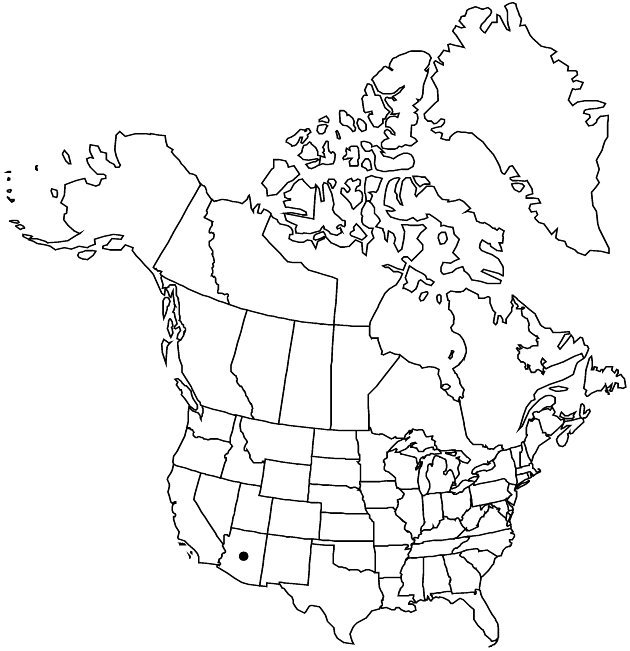Erigeron piscaticus
Phytologia 67: 304. 1989.
Annuals, 15–40 cm; taprooted. Stems (multiple) procumbent or ascending-decumbent, sparsely and evenly hirsute to hispido-pilose, minutely and densely stipitate-glandular. Leaves basal and cauline (proximal largest); blades obovate, 10–22 × 2–7 mm, slightly reduced distally, margins entire or rarely 1-toothed, faces sparsely pilose, minutely glandular. Heads 1–4 (per stem). Involucres 2.8–3.4 × 4–6 mm. Phyllaries in 2–3 series, hispido-pilose, minutely glandular. Ray-florets 45–58; corollas 3–3.7 mm, laminae not coiling or reflexing, white, often drying blue. Disc corollas 1.5–1.8 mm (throats indurate and inflated). Cypselae 0.8–1 mm, 2-nerved, faces sparsely strigose to glabrate; pappi: outer of setae, inner of 8–11 bristles.
Phenology: Flowering May–Jul(–Oct) (perhaps both earlier and later after rain).
Habitat: Gravelly and sandy washes
Elevation: 700–1200 m
Discussion
Of conservation concern.
Selected References
None.
